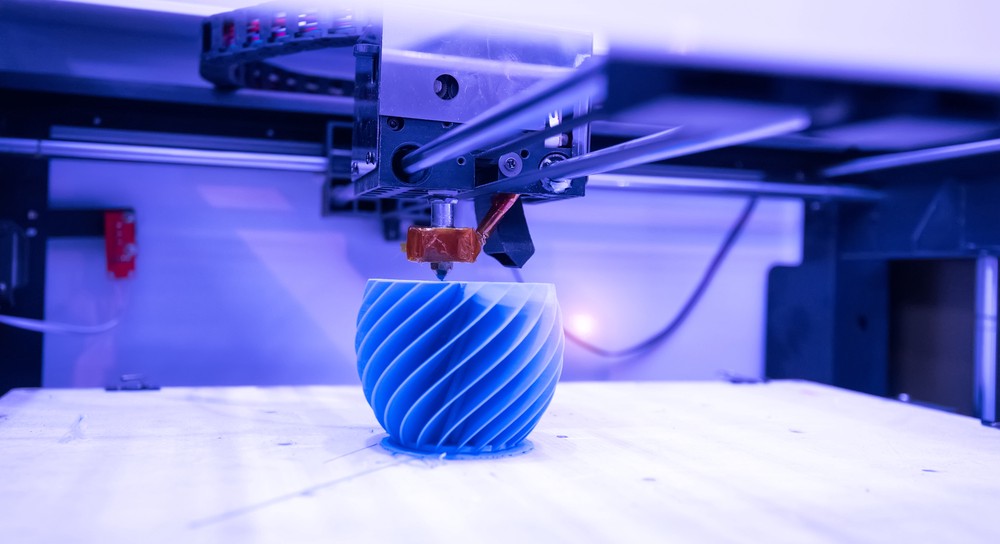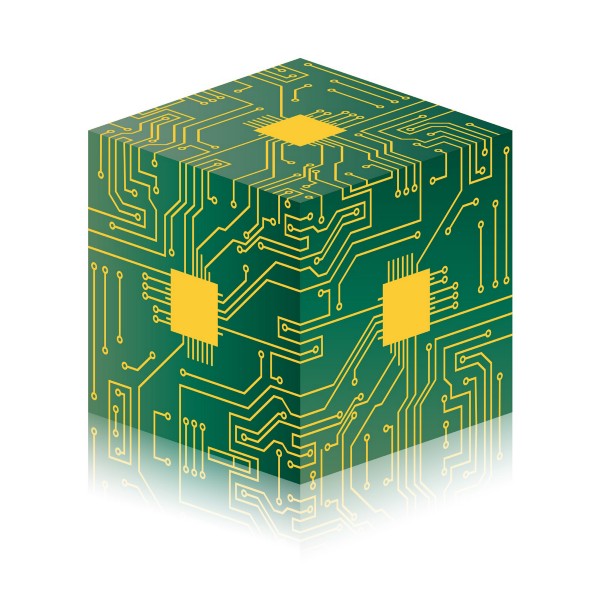PCB Design Software and Electronics Design News
#PCBdesign #PrintedCircuitBoards #ElectronicsDesign
Jan 9
How 3D Printed Prototypes are Changing the Landscape of PCB Design

PCB Printers — 3d Printers for PCBs are now a reality and not just for PCB prototypes.
It’s no surprise that you hate waiting for PCB prototypes. In the time it takes for the test board to arrive you could probably invent a new method for fabricating prototypes. Lucky for you, someone already came up with a new method. New 3D printers use nanoparticle technology to suspend metals in ink (I don’t know how this works, so don’t ask) in order to print conductive layers. Just like a normal 3D printer, they can also print layers of plastic or other materials to form a substrate. 3D printing can streamline the design process, build functional prototypes, and optimize designs. All for less money. It is amazing that a 3d printer for PCBs is now a reality.
Do you remember that first foray into board prototyping with an inkjet printer and acid in a Tupper ware? Printing, ironing, cursing, re-printing, ironing, etching. All that time and frustration just to mount a radio that produced more static than music. With expensive pricing and long wait times, professional prototyping can be as annoying as the white noise coming from my first radio. The technology used in this radio is now obsolete and current prototyping may be heading the same way. New 3D PCB printer technology is not only poised to revolutionize PCB prototyping but the way that PCBs are manufactured.
PCB Printers Are The Future of Prototyping
It’s no surprise that you hate waiting for prototypes. In the time it takes for the test board to arrive you could probably invent a new method for fabricating prototypes. Lucky for you, someone already came up with a new method. New 3D printers use nanoparticle technology to suspend metals in ink (I’m not a chemist, so please don’t ask me how this is done) in order to print conductive layers. Just like a normal 3D printer, they can print layers of plastic or other materials to form a substrate. 3D printing can streamline the design process, build functional prototypes, and optimize designs. All for less money.
Stop Waiting — I would go over the reasons why prototypes take so long to make, but you don’t care. I don’t either. The only thing we want to know is how quickly we can get the test model. With 3D printers, prototypes can be made in house, in one day. That means you could have a design modeled and tested in the same day. Let that sink in. New PCB design softwarehas simulation features that allow you to create a digital model. With a 3D printer, it’s quicker to print than to send it to a manufacturing. PCB prototypes have entered a new area.
Test Today — I know what you’re thinking, maybe it can be done in one day, but there’s no way the board can be functional. Well, prepare to be wrong. New 3D printers can print conductive layers, so the boards can actually be tested! These conductive layers will not behave exactly as etched copper. Talk to your 3D printer manufacturer to find out more about characteristics of the ink they use to print conductors.
Iterate Endlessly — My class once all failed a test in college. Our professor told us that iteration leads to optimization, and let us take the test again. One of my professors once told me that iteration leads to optimization, we were repeating homework problems. Rapid prototype iteration will allow you to test news designs as fast as you can produce them.
Save Money — An added benefit for the accountants out there is the low cost of 3D printed boards. With 3D printed prototypes you’ll be printing money. I’m sorry, but that is a required joke in blogs about printers.

Look at all those surfaces for SMTs!
The Future Of PCB Design and Manufacturing
You’ve seen the videos of 3D printers making impressively complex objects. Now, imagine being able to embed components and traces inside those complex shapes. That ability to design PCBs as true 3D shapes is perhaps 3D printing’s greatest perk. The cube above gives you an idea of what a true 3D printed PCB could look like. 3D printing would give designers more surface area, better conductors, smaller PCBs, and better material properties. PCB printers really do open up new opportunities:
More Surface Area — No matter how many layers you add to a PCB, there are still only two for surface mounted technologies (SMTs). This limiting factor would be removed with a full 3D design. Instead of mounting components to the surface, you could embed them anywhere inside the board. Imagine being able to embed your capacitors, resistors, and even some ICs. Some components may still need to be on an outer layer for cooling purposes. Unlike stacked PCBs, though, on a 3D printed PCB, you could potentially have 6 outer surfaces for hot SMTs.
Versatile Conductors — With the advent of 3D printer fabrication, vias and flat traces would become a thing of the past. Conductors could be printed in any shape or orientation. No more having to worry about how many separate layers you’ll need for a fine pitch ball grid array (BGA) breakout. Practically infinite layers and 3D conductors would make fanout strategies simple by using PCB printers.
Smaller PCBs — I know you’re tired of hearing your boss say, “make it smaller.” Decreasing the size of PCBs has become increasingly difficult, while the pressure to shrink them is only growing. 3D design would allow for much more compact boards, in a wider variety of shapes.
Diverse Material Properties — The material advantages could be enormous as well. As long as a material could be suspended in an ink it could be printed. Certain areas of a board could have a specific substrate. Conductivity in any area of a board could easily be manipulated. Even rigid-flex requirements would bend to the power of 3D printing with any part of the board being as flexible or rigid as you want.
3D printing is on the horizon, but 3D design software is already almost here. Several companies have PCB design software that can render a 3D “prototype.” This digital simulation is the first step towards the true 3D design that 3D printing will enable.
A good PCB manufacture can let you make your design dreams a reality. Whether you’re a first-time designer with big ideas for the next great gadget, or an experienced engineer looking to refine your workflow, Juvtmall is better choice for you.
#Juvtmall #PCB #PCBA #hardware
 USD
USD EUR
EUR GBP
GBP CAD
CAD AUD
AUD JPY
JPY
